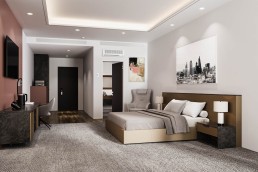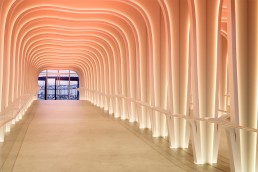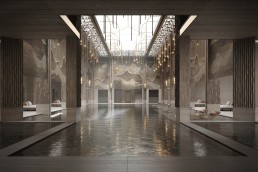Egger explores the value of reproduction materials in hospitality
With a focus on reducing costs, saving time and increasing environmental credentials, Aimee Fletcher, Egger UK’s Design and Product Manager, explores the benefits of making simple swaps from real materials to Egger’s reproductions.
Cost Reduction
In an economic climate of rising prices and lower consumer spending, cost becomes a vital consideration when it comes to design, and significant savings can be made by looking at alternatives to authentic materials such as stone, metal or wood veneer. These not only carry a significantly higher price tag, but often require specialist fabrication or recurring maintenance, adding to cost pressures. By making simple swaps to alternative materials, such as laminate worktops or decorative faced chipboards, you can not only control the budget at source, but also over time.
With natural stone, with factors such as weight, handling and waste, fabrication and fitting can notably impact a budget, while additional costs can occur over time with recurring treatment such as sealing. When seeking to avoid mounting costs, the benefits of wood-based reproductions should not be overlooked. With features such as scratch and stain resistance, lightfastness and stability, these products are also simple and efficient to install and require no ongoing maintenance.
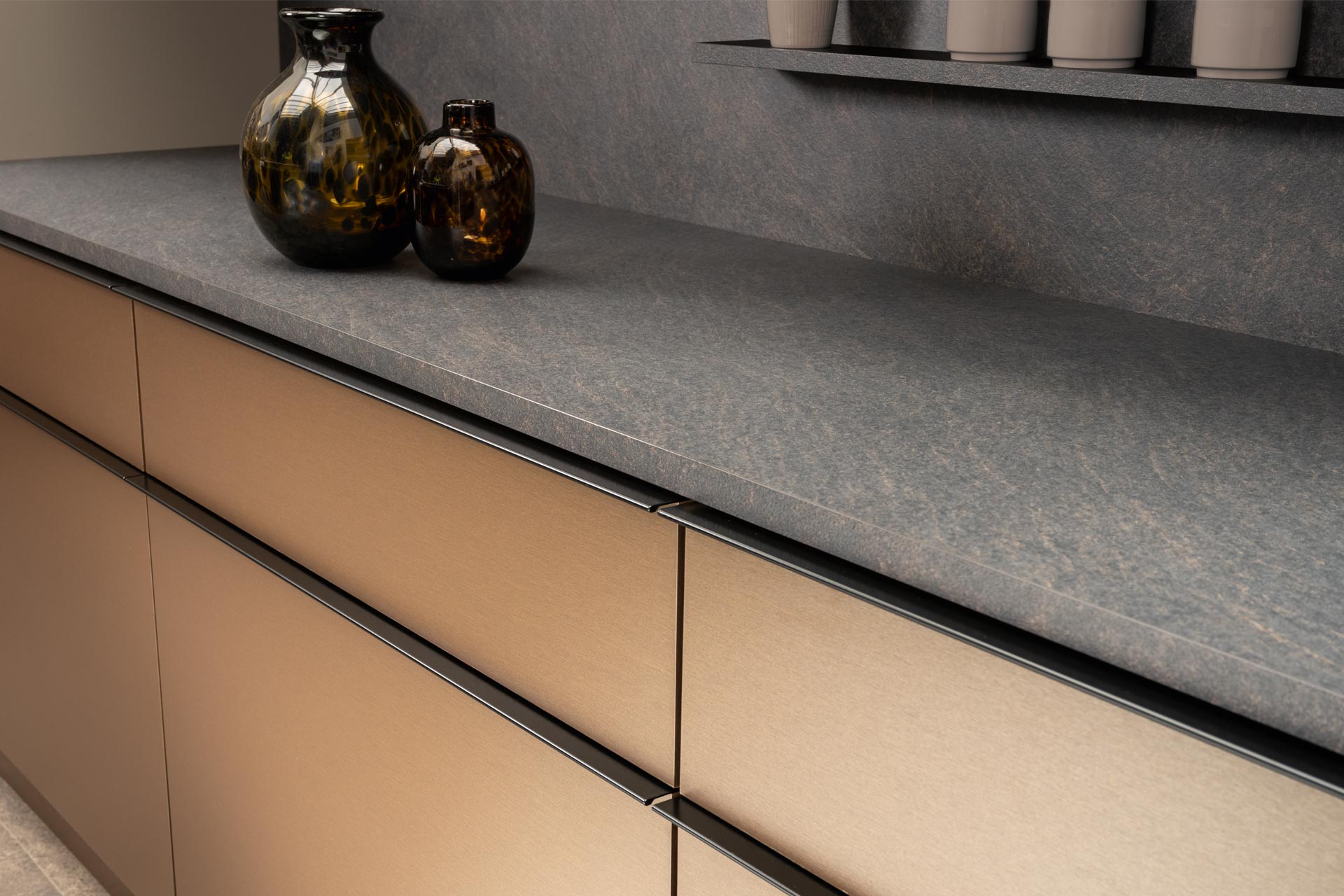
Maximising Efficiency
Time is also a key factor in any project schedule, and choosing materials that demand additional processing or ongoing labour can significantly delay completion. Stay on track by choosing alternative products in versatile formats, that offer fast and efficient processing, reduce waste and are readily available in pack sizes optimised to streamline fabrication.
Painting wood or veneer, for example, may require multiple processes and substantial labour hours. By considering reproduction materials that offer the same look in a ready-made finish, projects can be streamlined and remain on course for prompt delivery. In case of damage during fabrication, replacements can also be sourced at pace and without further disruption. In a multi-unit development, even a small amount of extra labour per install could be the difference between a prompt or delayed delivery.
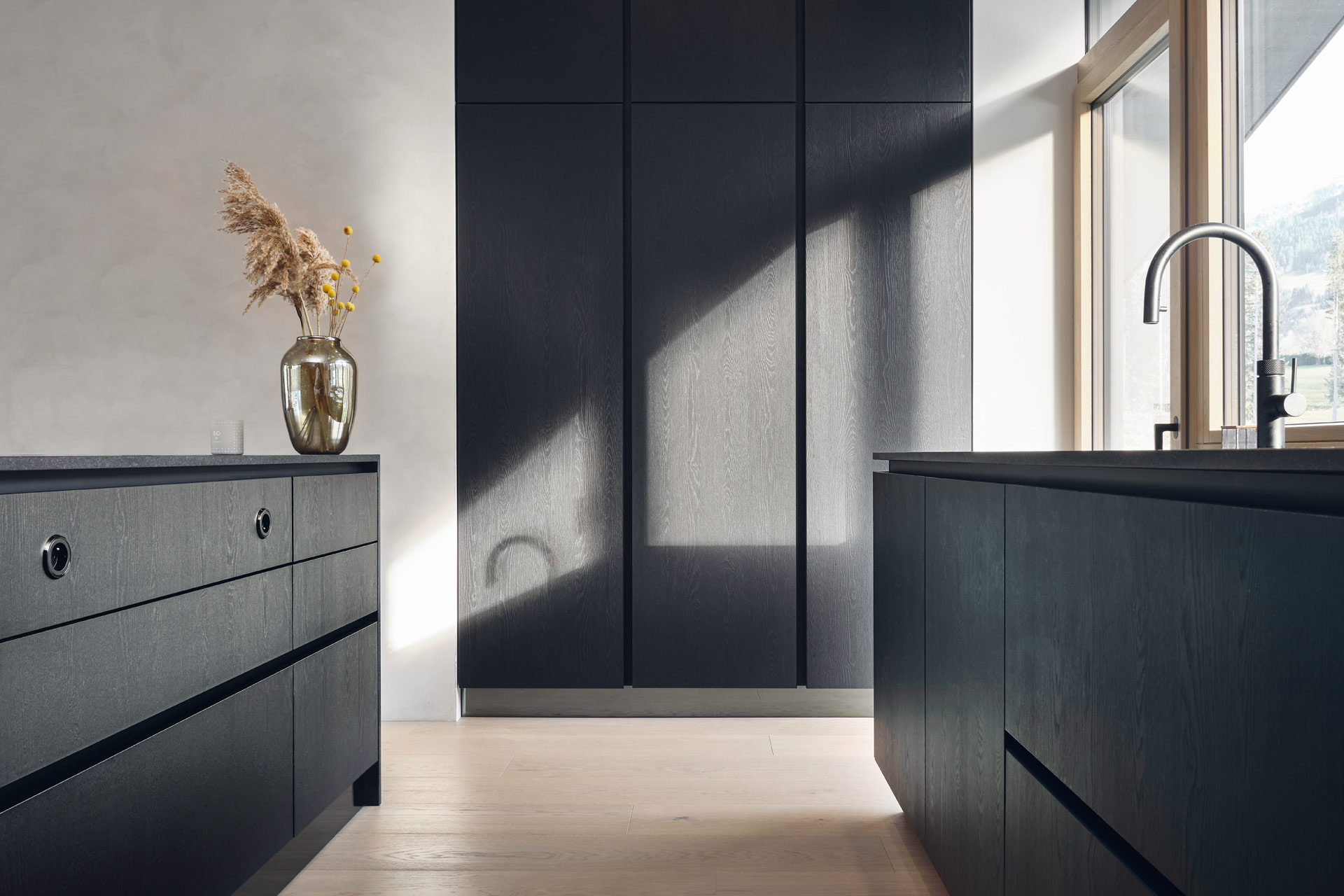
Environmental Impact
Minimising environmental impact can add further value to a project. Look for products that make use of recycled content and are recyclable at the end of their lifecycle, promoting material circularity. Manufacturers’ raw material procurement and production techniques should also be considered, and attention paid to supporting documentation available via published resources.
Crucially, natural does not necessarily mean sustainable. Many naturally derived materials, such as stone, marble or metal, require energy-extensive processes, and carry high carbon footprints as a result of fabrication and transportation.
Making The Swap
By selecting the right material technology for specific application areas, and choosing carefully developed finishes with high quality prints and textures, value can be added without compromise on design. Whatever the project, there are alternative products readily available that cost less, save time and keep environmental impact at a minimum.
Related Posts
20 September 2024
First Look: SLS prepares to debut in Europe
18 September 2024
